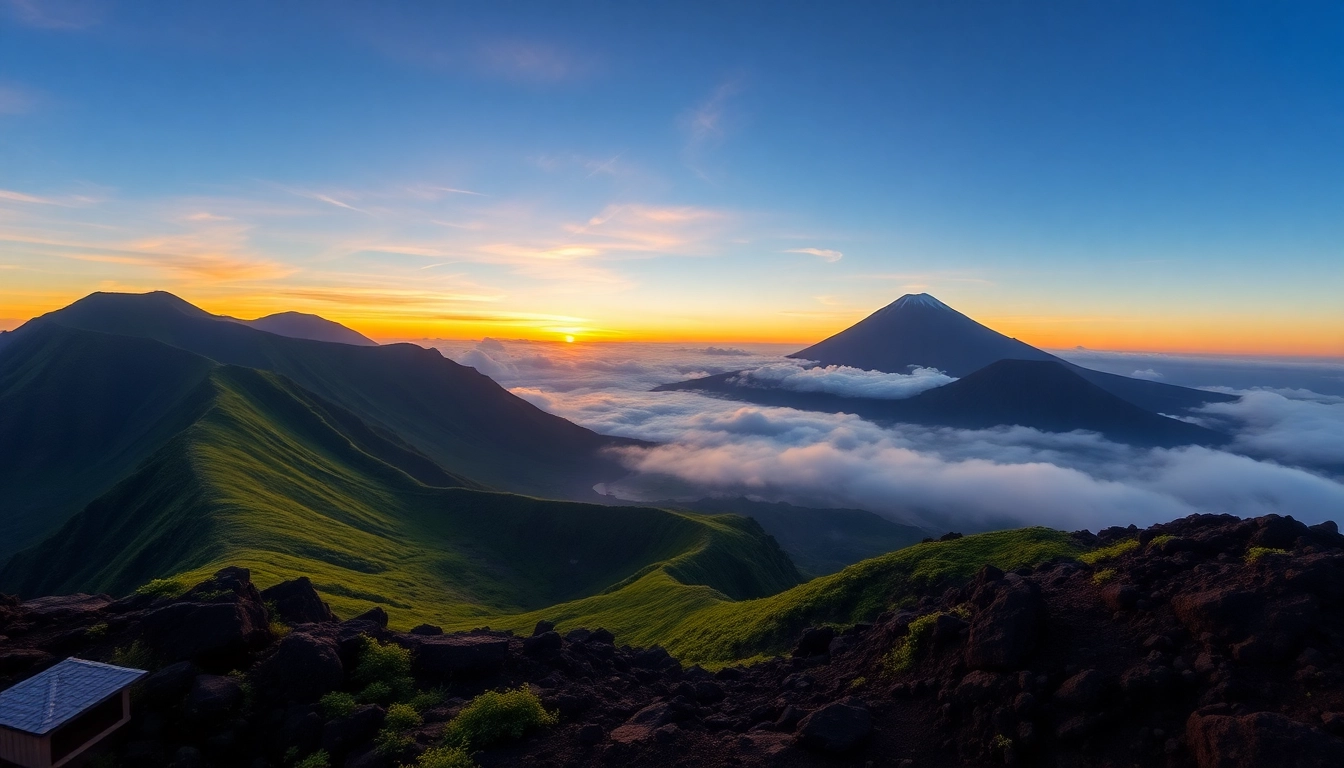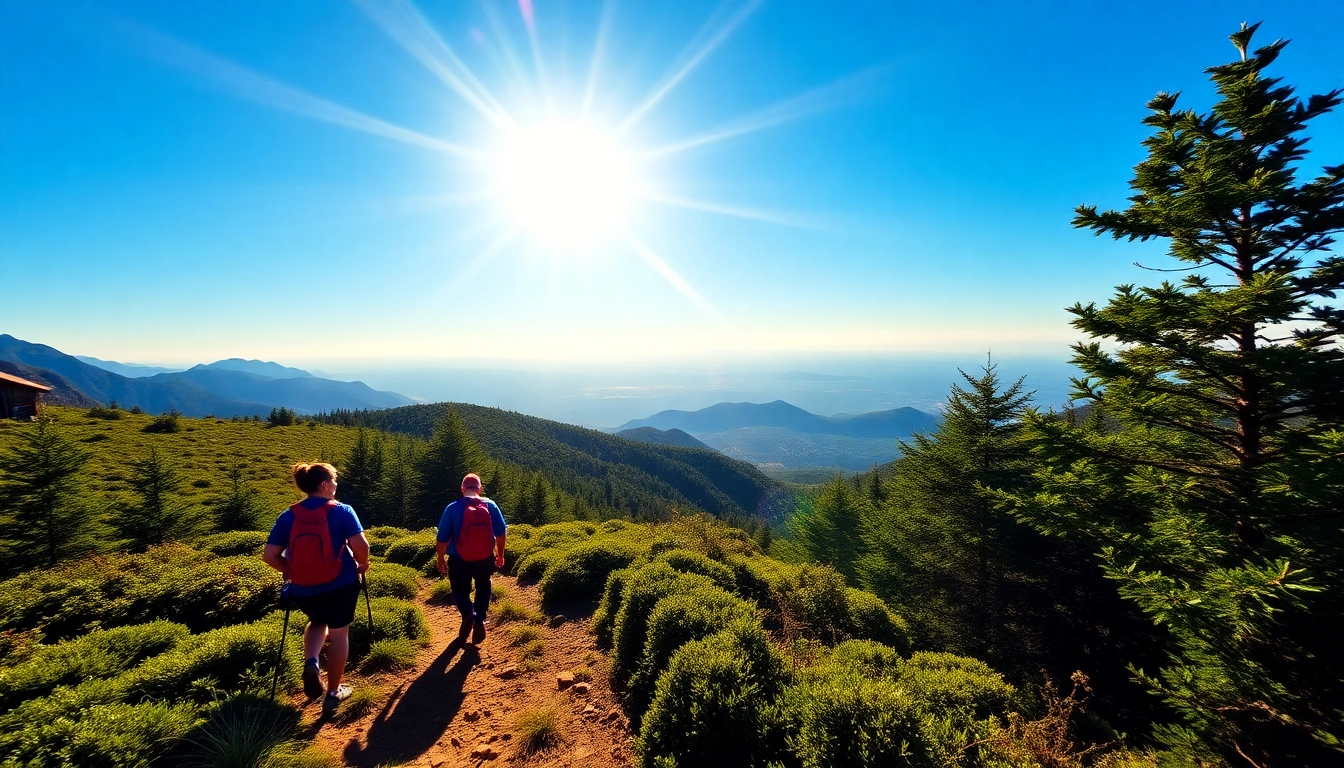Introduction to Mt. Rinjani: Indonesia’s Second Highest Volcano
Rising majestically on the island of Lombok, Mt. Rinjani stands as Indonesia’s second tallest volcano, embodying both natural grandeur and geological complexity. Towering at an impressive height of approximately 3,726 meters (12,224 feet), Rinjani draws adventurers, nature lovers, and cultural explorers alike. Its prominence is not solely due to its elevation; the mountain’s active volcanic nature, stunning landscapes, and cultural significance make it a must-visit destination in Southeast Asia.
Located within the boundaries of the Rinjani National Park, this volcano offers a unique blend of challenging treks, diverse ecosystems, and spiritual experiences. As an active stratovolcano, Rinjani has a storied geological history filled with eruptions, formations, and ecological transformations that span thousands of years.
This comprehensive guide aims to explore the various facets of Mt. Rinjani, from its geological features and biodiversity to practical tips for trekking and exploring its surrounding cultural heritage. Whether you’re an seasoned mountaineer or a curious traveler, understanding the richness of Rinjani enhances your appreciation for this Indonesian icon, inspiring sustainable tourism and awe-inspiring adventures.
Natural Beauty and Biodiversity of Rinjani National Park
Unique Flora and Fauna Around Mt. Rinjani
The ecosystem surrounding Mt. Rinjani is one of the most biodiverse in Indonesia, marked by its transition zone that spans lush rainforests, alpine meadows, and volcanic landscapes. The park, covering over 41,000 hectares, is a sanctuary for numerous endemic and endangered species.
Among the flora, you’ll find towering trees like the Rinjani edelweiss, rare orchids, and vibrant tropical plants that thrive in the humid lower slopes. As you ascend, the vegetation becomes sparser, giving way to mosses and hardy grasses. The fauna is equally impressive, including the Lombok strait purple monkey, wild boars, various deer species, and an array of birdlife such as the Kingfisher and the Sunda Kelapa.
Birdwatchers and ecologists frequently find Rinjani’s diverse habitats ideal for studying ecological resilience and conservation strategies. The park’s commitment to protecting these species underpins Indonesia’s broader efforts to safeguard biodiversity amid increasing environmental pressures.
Highlights of the Rinjani Waterfalls and Lakes
Rinjani’s scenic landscapes include numerous waterfalls and lakes, each with its own story and natural splendor. Segara Anak Lake, situated within the caldera at about 2,000 meters altitude, is the most renowned. Its turquoise waters are a breathtaking sight and are considered sacred by local communities. The lake is also a geothermal feature, heated by the volcano’s ongoing activity.
Other notable waterfalls include Sendang Gila, Tiu Kelep, and Jeruk Manis, each nestled within lush forests and accessible via trekking routes suitable for many levels of adventurers. These waterfalls provide vital freshwater habitats, recreation opportunities, and contribute to the ecological richness of the park.
These lakes and waterfalls serve both ecological and cultural functions—providing natural beauty, spiritual significance, and supporting local livelihoods through eco-tourism.
Conservation Efforts and Ecological Significance
Recognizing Mt. Rinjani’s ecological value, Indonesia designated the area as a protected national park, fostering conservation projects aimed at habitat preservation and species protection. Initiatives include reforestation programs, anti-poaching patrols, and eco-friendly tourism guidelines.
The ecological significance extends beyond biodiversity; Rinjani’s volcanic soils enrich surrounding areas, supporting local agriculture and maintaining ecological resilience. The ongoing volcanic activity, while potentially dangerous, also contributes to the formation of fertile lands and unique geothermal features that attract scientists and tourists alike.
Collaborative efforts between local authorities, conservation organizations, and communities aim to balance ecological preservation with sustainable tourism.
Guided Trekking and Adventure Activities on Mt. Rinjani
Popular Trekking Routes and Difficulty Levels
Mt. Rinjani offers various trekking routes catering to a range of skill levels, from beginner hikers to seasoned mountaineers. The most prominent routes include the Sembalun Loop and the Senaru Route, each providing distinct experiences and challenges.
The Sembalun route is considered slightly more accessible and offers scenic vistas along the ascent, typically taking 2 to 3 days for a round trip. It covers approximately 27 km with moderate difficulty, making it ideal for trekkers with some experience. The Senaru route is longer and more challenging, with a trek duration of 3 to 4 days, crossing dense forests and rugged terrain.
For experienced climbers, the summit attempt to the crater rim demands preparation, as it involves navigating steep slopes, unpredictable weather, and volcanic activity risks. Safety and physical fitness are paramount regardless of the chosen route.
Preparation Tips and Essential Equipment
Proper preparation significantly enhances your trekking experience on Rinjani. Essential gear includes sturdy hiking boots, layered clothing suitable for temperature fluctuations, rain protection, and warm sleeping bags. A good-quality trekking pole, headlamp, and sufficient food and water supplies are also critical.
Physical conditioning—especially cardiorespiratory fitness—is essential. Prior hikes on similar terrains can build stamina and confidence. Additionally, mental preparedness for unpredictable weather and altitude challenges is vital.
Local guides and porters are highly recommended—they possess route knowledge, safety skills, and cultural insights that enrich your journey.
Best Seasons and Planning Your Expedition
The optimal trekking seasons are during the dry months from May to September, when weather conditions are more stable, and the trail is less muddy. The rainy season (November to March) may cause access issues, slippery trails, and increased volcanic activity risks.
Early planning is essential, including obtaining necessary permits from the Rinjani National Park authority. Booking guides, accommodation, and equipment rentals well in advance ensures smooth logistics.
Adequate acclimatization days are recommended to reduce altitude sickness risk, and travelers should remain flexible to weather fluctuations.
Practical Information: Guides, Costs, and Safety
Estimated Guide and Porter Fees for Rinjani
Hiring a local guide is essential for safety, navigation, and cultural insights. As of 2025, the typical daily fee for a guide ranges around Rp. 350,000 (approximately USD 24) per day, with longer treks often negotiated discounts. Porters, responsible for carrying gear, usually charge about Rp. 300,000 per day.
For a 4-day trek, total guide fees can sum to around Rp. 1,400,000, and porter fees about Rp. 1,200,000, making the entire package a manageable investment for ensuring safety and support.
It’s advisable to select licensed guides from reputable agencies to guarantee safety standards, and to clarify what is included in the fees—such as meals, permits, and equipment.
Safety Tips and Common Challenges
Safety is paramount while trekking Mt. Rinjani. Common challenges include altitude sickness, unpredictable weather, volcanic activity, and challenging terrain. To mitigate these, trekkers should:
- Acclimate properly before the summit attempt.
- Stay updated on volcanic activity reports from authorities.
- Pack adequate clothing for temperature and weather variations.
- Follow designated trails and heed guide instructions.
- Carry a basic first aid kit for minor injuries or altitude symptoms.
Emergency protocols are well-established; local guides are trained to handle medical emergencies, and rescue teams are available for severe incidents.
Permits and Regulations for Climbing Mt. Rinjani
All visitors require a permit to access Rinjani National Park, which can be obtained through authorized travel agencies or park offices. Permits typically include a park entry fee, environmental fee, and trekking permit.
Regulations emphasize environmental protection—trekkers should avoid littering, smoking in sensitive zones, and disturbing wildlife. Camping is only allowed at designated sites, and fires are strictly prohibited outside approved areas.
Complying with these regulations ensures the preservation of Rinjani’s natural beauty for future generations.
Enhancing Your Visit: Cultural Insights and Local Experiences
Local Communities and Cultural Heritage of Lombok
The regions surrounding Mt. Rinjani are home to vibrant Sasak and Balinese communities, each with rich cultural traditions and crafts. Interacting with locals offers insights into their daily lives, spiritual beliefs, and rites associated with Rinjani.
Many villages, such as Senaru and Sembalun, serve as gateways for trekkers and provide cultural experiences including traditional dances, local markets, and handicraft workshops.
Respecting local customs and supporting community-led tourism initiatives promote sustainable development and preserve cultural heritage.
Nearby Attractions and Island Hopping Opportunities
Beyond Mt. Rinjani, Lombok boasts numerous attractions—Gili Islands, known for pristine beaches and vibrant marine life; Senggigi Beach; and waterfalls like Sendang Gila. Combining mountain trekking with island hopping creates a diverse, enriching holiday.
Organized tours often include visits to nearby waterfalls, traditional markets, and snorkeling spots, offering a comprehensive exploration of Lombok’s natural and cultural bounty.
Responsible Tourism and Supporting Local Economy
Responsible tourism practices include minimizing environmental impact, respecting local communities, and choosing eco-friendly accommodations and guides. Participating in initiatives such as community-based tourism projects or purchasing locally made products helps support rural economies.
Visitors should also educate themselves about the ecological fragility of Rinjani’s ecosystems and adopt low-impact behaviors, ensuring this natural wonder remains pristine for future generations.

